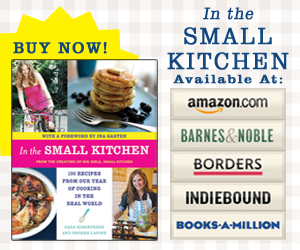
Whether they’re served warm or cold, whole grains are heating up grocery store shelves and restaurant menus with offerings ranging from pastas, cereals and breads to crackers, snack foods and even frozen entrees. “Whole grains are the food of the minute because they involve less tampering with the food and getting the maximum nutrition from it,” says registered dietitian Keith Ayoob, an associate professor at the Albert Einstein College of Medicine in New York and author of The Uncle Sam Diet. “As the whole-foods concept explodes, it’s easier than ever to get whole grains.”
Yet the average person in the U.S. eats less than one serving of whole grains per day, even though experts recommend at least three servings of whole grains each day and that at least half of your total grain intake be whole-grain. Why? Consuming a diet that’s rich in whole grains has been linked to a reduced risk of high cholesterol, type 2 diabetes, heart disease, stroke, obesity and a variety of cancers.
**The Whole Scoop on Whole Grains from Live Right Live Well: Diet**
Getting the Whole Thing
“A whole grain consists of the entire seed of the plant — the bran (which is the outer coating of the kernel), the endosperm (or middle layer) and the germ (which is the inner layer),” explains Lisa Hark, Ph.D., a registered dietitian and nutrition consultant in Philadelphia and co-author of The Whole Grain Diet Miracle and Nutrition for Life. Besides containing good-for-you fiber, whole grains also provide healthy oils, health-promoting phytochemicals, vitamins (such as A, E and several B’s) and minerals (like magnesium, iron, calcium and selenium).
Unfortunately, when it comes to packaged foods, it’s often hard to get the whole truth about what’s really in them. That’s beginning to change thanks to the Whole Grains Council. Now, if a product bears the basic black-and-gold whole-grain stamp, you’ll know it contains at least 8 grams (half a serving) of whole grains. If a product bears the “100%” stamp, all the grains in the product are indeed whole grain, and each serving contains 16 grams or more of whole grains. You can also find out what’s in a packaged food by reading the nutrition label: If the ingredient list has whole wheat, whole oats, whole rye or another “whole” grain listed as the first ingredient, you’ll know you’re getting the good stuff, says Ayoob.
Beyond Whole Wheat
While there’s a whole lot of whole wheat out there, you’d be cheating yourself if you didn’t explore the wider world of whole grains. Consider:
Barley. One of the oldest grains in history, barley is a fiber-rich, nutrient-dense whole grain, says Hark. Pearled barley is delicious in soups and salads, whereas cracked barley or barley flakes can be used for hot cereals or in such baked goods as biscuits, pancakes and breads.
Brown rice. With far more fiber, protein, vitamins and minerals than its pale sibling (white rice), brown rice can be used in soups, side dishes or rice pudding, or as the base for a tasty stir-fry with veggies and meat.
Buckwheat. Buckwheat noodles (aka soba noodles) can be used in soups and pasta dishes, while buckwheat flour can be used to make hearty pancakes, breads and muffins. “Because it is not actually a variety of wheat [it’s another type of plant altogether], people who are allergic to gluten can have buckwheat,” says Hark.
Cracked Wheat. Made of raw whole-wheat berries, cracked wheat can be used in pilafs and salads.
Kamut. A distant cousin to wheat, kamut contains 20 to 40 percent more protein, vitamins and minerals than wheat does, notes Hark, and it has a naturally sweet, buttery flavor. Try it as a hot cereal with milk, vanilla and raisins, combine it with rice or another whole grain in a side dish, or look for kamut pastas and breads.
Oats. Opt for whole oats or steel-cut oats (aka Irish oats), both of which involve minimal processing. Use oats as a terrific hot breakfast cereal or as an ingredient in hearty bread.
Quinoa. Native to South America, quinoa is one of the most nutritious grains around. It is a high-protein grain that makes a delicious alternative to oatmeal for breakfast. Or you can use it in a pilaf or rice dish, suggests Ayoob. Also look for quinoa pasta — a great choice for those who must go gluten-free.
So try to include more whole grains in your life. Just make sure you’re swapping processed grains for whole grains, not simply adding whole grains to your current diet. (Otherwise, you could set yourself up for a calorie overload.) By including more whole grains in your meals, you’ll keep your taste buds happy and boost your health along the way.
Stacey Colino of Live Right Live Well has written for The Washington Post’s health section and many national magazines, including Newsweek, Woman’s Day, SELF, Cosmopolitan, Glamour, Parenting, Sports Illustrated and Ladies’ Home Journal.
Originally posted on Saturday, October 1st, 2011










2 Responses to “The Whole Scoop on Whole Grains”
November 18th, 2011
[...] Right now I’m craving pumpkin, apple, and carrot muffins made hearty and filling with whole grain flour, bran and oats. For those looking to cut down on the sweets, try swapping in savory [...]
July 15th, 2013
[...] Fill up on 2 cups of cooked whole grains throughout the afternoon and evening. But! Avoid gluten (whole wheat, barley, [...]
Leave a Reply